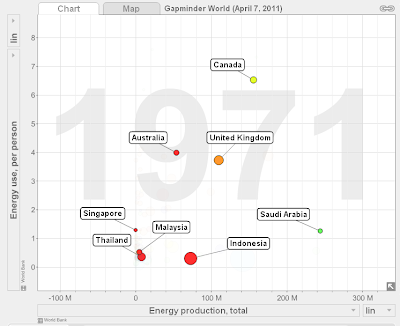In recent speech in front of Australian Parliament, President Obama affirms US commitment to be a productive “Pacific Nation”. His speech is particularly interesting because he pictured Asia Pacific region as a major emerging economy which rival Europe and even North America. However, he also challenged these emerging economies with new paradigm of commerce:
“We recognize that economic partnerships can't just be about one nation extracting another's resources. We understand that no long-term strategy for growth can be imposed from above. Real prosperity-prosperity that fosters innovation, prosperity that endures-comes from unleashing our greatest economic resource: the entrepreneurial spirit of our people.”
He made a call to a more locally engaged Multinationals in the country where they operates. Not only extracting its resources, but also empowering the local communities and nations, so the whole economy rises together:
“We need growth that is fair, where every nation plays by the rules-where workers rights are respected and our businesses can compete on a level playing field; where the intellectual property and new technologies that fuel innovation are protected; and where currencies are market-driven, so no nation has an unfair advantage.”
“We need growth that is broad-not just for the few, but for the many, with reforms that protect consumers from abuse and a global commitment to end the corruption that stifles growth. We need growth that is balanced, because we'll all prosper more when countries with large surpluses take action to boost demand at home.
He also envisioned a sustainable economies in Asia Pacific which rely on the development of clean energy that should be affordable to the people all over Asia Pacific regardless of its economic size:
“And we need growth that is sustainable. This includes the clean energy that creates green jobs and combats climate change, which cannot be denied. We see it in the stronger fires, the devastating floods and the Pacific islands confronting rising seas. And as countries with large carbon footprints, the United States and Australia have a special responsibility to lead.”
Finally, he challenged the country that is still not aware its “place and time” to make a better choice for its future:
“Every nation will contribute to the solution in its own way, and I know this issue is not without controversy, in both our countries. But what we can do-what we are doing-is to work together to make unprecedented investments in clean energy; to increase energy efficiency; and to meet the commitments we made at Copenhagen and Cancun. We can do this. And we will.”
I bet President Obama had his eye on “Methanol Economy” that was envisioned by Prof. George Olah in his book :”Beyond Oil & Gas: the Methanol Economy”. He knows that affordable energy should be available for all people in Asia Pacific, the home of almost half of world's population. He knows if Methanol Economy needs to be started anywhere in the world, it has to be started in Asia Pacific because of its geographical and geopolitical nature. It is so fitting that he chose this region as place where he delivered the speech above.









